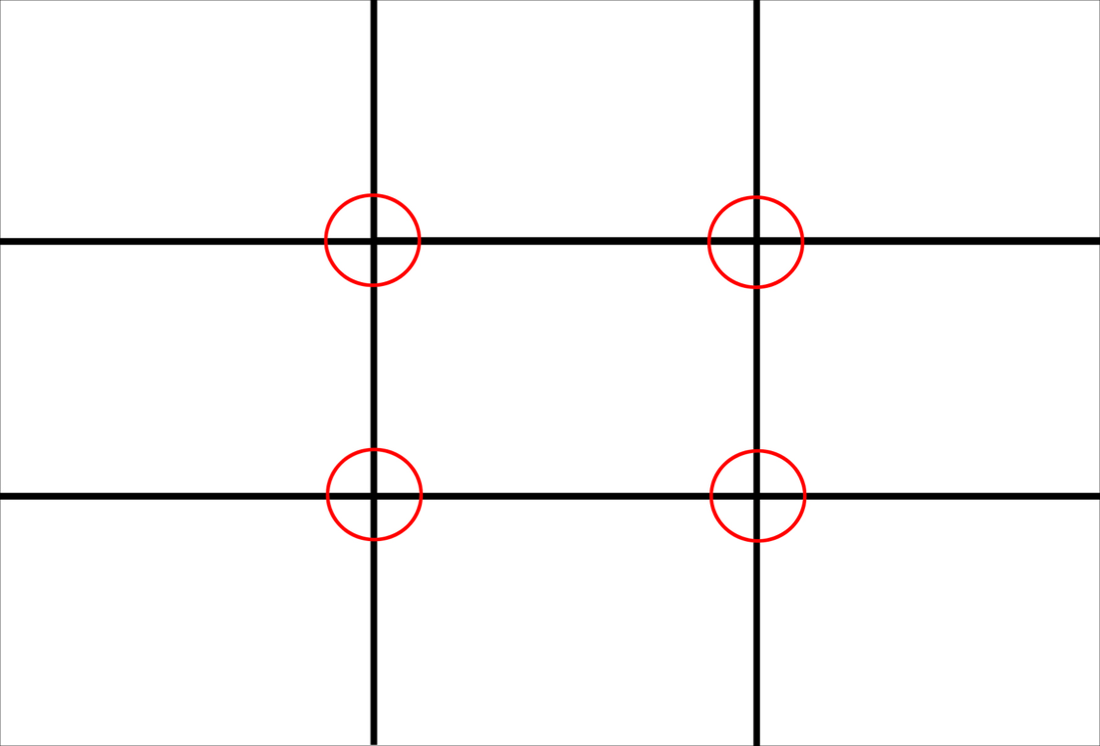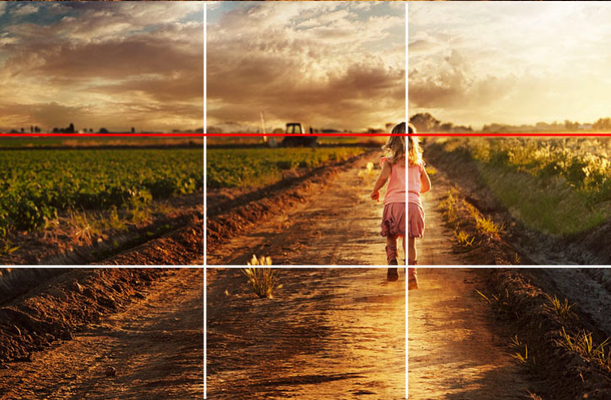|
>>RULE OF THIRDS<<
The basic principle behind the rule of thirds is to imagine breaking an image down into thirds (both horizontally and vertically) so that you have 9 parts. With this grid in mind the ‘rule of thirds’ now identifies four important parts of the image that you should consider placing points of interest in as you frame your image. Not only this – but it also gives you four ‘lines’ that are also useful positions for elements in your photo. |
|
The theory is that if you place points of interest in the intersections or along the lines that your photo becomes more balanced and will enable a viewer of the image to interact with it more naturally. Studies have shown that when viewing images that people’s eyes usually go to one of the intersection points most naturally rather than the center of the shot – using the rule of thirds works with this natural way of viewing an image rather than working against it.
In this picture of the bee , the bee’s eye becomes the point of focus. |
|
In this shot the subject is placed along one of the lines which means she is considerably off center and therefore creating the point of interest. Placing her right in the center of the frame could have potentially resulted in an ‘awkward’ or less interesting shot.
Are there any other Clues the photographer gives us to let us know where to look? |
Keep the rule of thirds in mind as you edit your photos later on.
Post production editing tools today have good tools for cropping and reframing images so that they fit within the rules.
Experiment with some of your old shots to see what impact it might have on your photos.
Post production editing tools today have good tools for cropping and reframing images so that they fit within the rules.
Experiment with some of your old shots to see what impact it might have on your photos.
|
THE ASSIGNMENT
In this assignment you will be challenged to submit 9 photos demonstrating the rule of thirds see both the example to the right and Nelsons google slide example REQUIREMENTS
|






